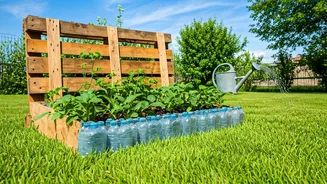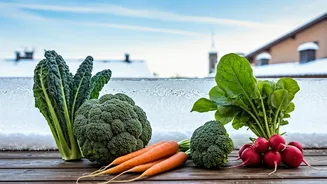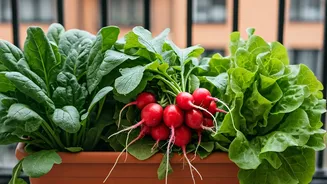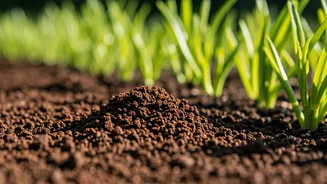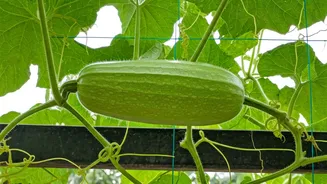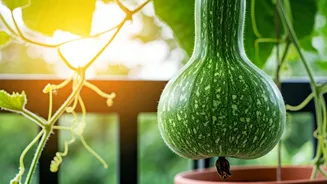Box Barriers for Weeds
Cardboard boxes, often overlooked, are a gardener's secret weapon. These boxes can be employed effectively to suppress weed growth, negating the need for
chemical herbicides. Begin by gathering used cardboard boxes, removing any tape or labels. Flatten the boxes and place them directly over the areas where you intend to create a garden bed or pathway. Ensure the boxes overlap slightly to prevent weed penetration. Wet the cardboard thoroughly to help it stay in place. Then, cover the cardboard with a layer of mulch, compost, or even soil. This method not only acts as a weed barrier but also enriches the soil as the cardboard decomposes, fostering a healthy environment for your plants. This is an inexpensive, easy and accessible solution for the Indian gardening context.
Containers for Planting
Old containers, instead of being discarded, can serve as excellent planters. Consider items such as plastic containers, repurposed buckets, or even old tires. Ensure that any container you use has drainage holes at the bottom to prevent waterlogging, critical in climates with heavy rainfall. If the container lacks holes, create some using a drill or a sharp object. Before planting, clean the container thoroughly to remove any residue. Depending on the size and aesthetic of the container, consider painting or decorating it to match your garden's theme. Fill the container with a suitable potting mix and then transplant your chosen plants. Recycled planters not only add a unique flair to your garden but also reduce waste, aligning with eco-friendly gardening practices suitable for Indian homes.
Mulch from Scraps
Kitchen scraps, often deemed waste, can be transformed into nutrient-rich mulch for your garden. Collect vegetable peels, fruit scraps, coffee grounds, and tea leaves. Avoid using meat, dairy, or oily foods, as these may attract pests and cause odors. Compost these scraps to create a rich mulch. Alternatively, you can use the scraps directly, after chopping them into smaller pieces. Apply the mulch around your plants, keeping it away from stems to prevent rot. This not only suppresses weed growth but also helps retain soil moisture, reducing the need for frequent watering. As the organic material breaks down, it enriches the soil with essential nutrients, promoting healthier plant growth, a common practice within Indian households for composting waste.
Bird Feeders from Bottles
Turn discarded plastic bottles into attractive and functional bird feeders. Start by thoroughly cleaning a used plastic bottle. Then, cut a few holes in the bottle—these will serve as perches for the birds. Insert small dowels or twigs into these holes to create perches. Next, cut openings just above the perches to allow birdseed to flow into the openings. Securely attach a lid to the bottle to protect the birdseed from rain and moisture. You can also decorate the bottle with paint or markers to make it more visually appealing. Hang the feeder in a visible location where birds are likely to visit, providing a source of food and water during dry seasons.
Paths from Recycled Materials
Enhance your garden with pathways constructed using recycled materials. Consider using broken tiles, bricks, or even small pebbles. First, prepare the path by removing any grass or weeds from the area. Level the ground and outline the path's shape. Lay down a base layer of sand or gravel to provide drainage and stability. Then, arrange your recycled materials on the base, creating your desired pathway design. Ensure the surface is even and the materials are securely placed. You can fill any gaps between the materials with sand or soil to stabilize the pathway further. Recycled pathways not only add charm to your garden but also reduce waste and create a visually appealing, sustainable element for your outdoor space. This is a great way to beautify your garden for small Indian homes.
